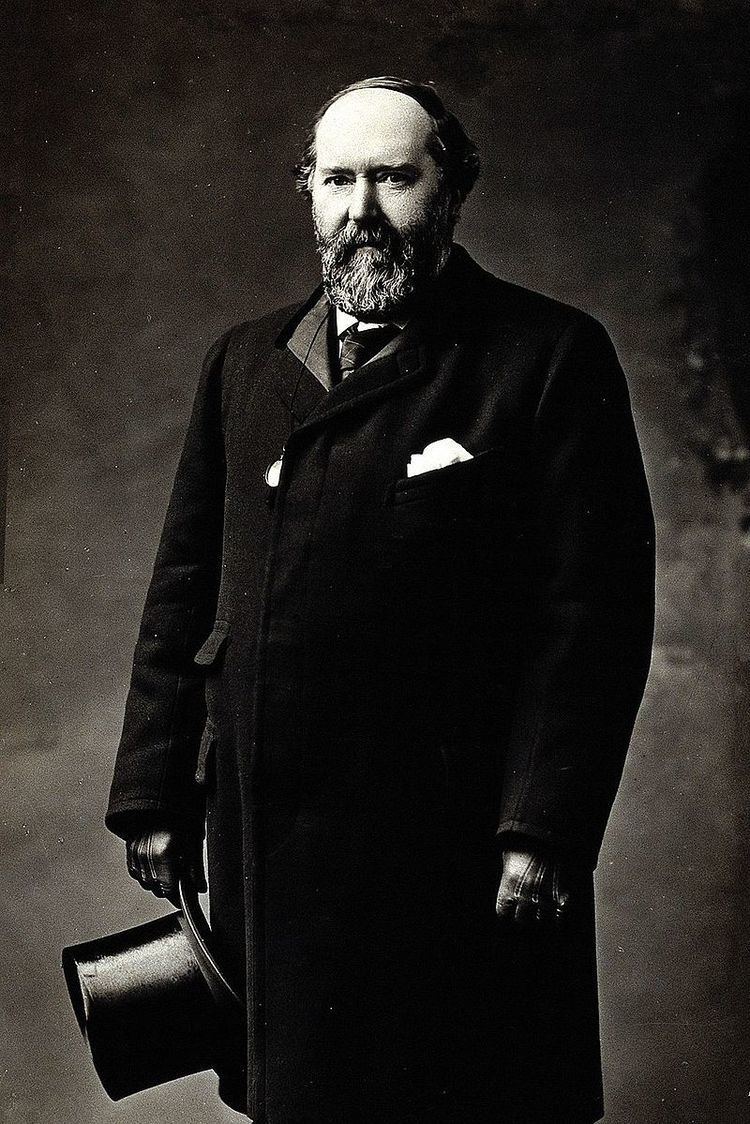Name Thomas Stewart | Died February 3, 1900 | |
 | ||
Sir Thomas Grainger Stewart, (23 September 1837 in Edinburgh – 3 February 1900 in Edinburgh) was an eminent Scottish physician who served as president of the Royal College of Physicians of Edinburgh (1889–1891), president of the Medico-Chirurgical Society of Edinburgh, president of the medicine section of the British Medical Association, and Physician-in-Ordinary to the Queen for Scotland. He was perhaps best known for describing the condition known as multiple neuritis as well as directing scientific attention in Great Britain to the deep reflexes.
Contents
Life
He was born in Edinburgh the son of Alexander Stewart, a decorator, and Agnes Grainger. His early education was at the High School in Edinburgh
He then was accepted at the University of Edinburgh Medical School, graduating MD in 1858, and studied in Berlin, Prague and Vienna after graduation. On his return to Edinburgh he became resident physician in the Royal Infirmary. In 1862 he was appointed pathologist to the Royal Infirmary and lecturer on pathology at Surgeon's Hall. During the succeeding seven years he published numerous papers on pathological and clinical subjects, and in 1869 unsuccessfully contested the chair of general pathology at the University of Edinburgh.
In 1866 he was elected a Fellow of the Royal Society of Edinburgh his proposer being John Hutton Balfour.
He resigned his post as pathologist, and was in early 1876 elected ordinary physician to the Royal Infirmary and lecturer on clinical medicine. On the death of Dr. Thomas Laycock later the same year, Grainger Stewart succeeded him as Professor of Medicine at the University of Edinburgh, serving as such until his own death in 1900. He wrote several prominent medical works, notably on kidney, lung and nervous diseases, and the popular textbook On the position and prospects of therapeutics: a lecture introductory to a course on materia medica and dietetic (1862).
Grainger Stewart was president of the tenth International Medical Congress in Berlin, and in 1898 was president of the British Medical Association at its meeting in Edinburgh. From 1889 to 1891 he was president of the Royal College of Physicians of Edinburgh. In 1882 he was appointed a Physician-in-Ordinary to Queen Victoria for Scotland in 1882, and in 1894 received a knighthood on the recommendation of the Prime Minister, Lord Rosebery. He received the honorary degree Legum Doctor (LL.D.) from Aberdeen University in 1897.
He was also a literary critic, playwright, and amateur archaeologist, an elder of the Free Church and in politics a Liberal.
In later life Stewart lived at 19 Charlotte Square, one of Edinburgh's most prestigious addresses, just off Princes Street. He died at his residence in Edinburgh on 3 February 1900, and is buried in an east-facing grave in one of the smaller south sections in Dean Cemetery in Edinburgh. His daughter, Agnes Grainger Stewart, was a writer.
Family
He married twice: firstly in 1863 to Josephine Dubois Anderson, who sadly died the following year; secondly, in 1866, to Jessy Dingwall Fordyce MacDonald. Both wives are buried with him.
